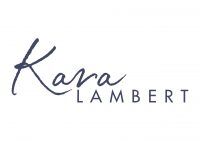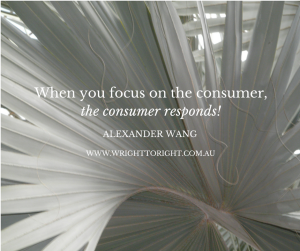Where do your mission and visions cross? Are there any common words or themes? Where does you ideal customer meet with your mission? With your vision? When do you meet the customer needs? If you are unsure of any of these things, head back over to the previous posts and read more about how to get to this point, then come on back and continue on.
List the adjectives, or find relevant adjectives, to describe the intersections. These are the words you use to drive your interactions. There’s a word of warning, they must be for your client. If you start writing about the business it becomes about you. You don’t need to sell to, or convince, you. Also, unless your ideal client is a competitor, don’t write about your industry either. Your customer doesn’t want to know why your industry does xyz, they have a need and want you to meet it. Tweet this It’s why they are at your website/Facebook/Google+.
Go back and look at the list and where it meets your ideal client. What words help to meet their needs? What benefits (don’t confuse these with features) are they looking for? Remember you wrote out their preferences, look to these for inspiration on how they want to be sold to and what needs you need to meet. Now, what are the benefits of your product or service and how do you meet your idea customer’s needs? This is the ‘what’s in it for me’ that your customer wants answered and you need to explain. Watch the following video, it gives a great (and quick) run down on the difference between a feature and a benefit; plus there’s a little extra business boost to get you ahead of the game.
Now let’s step it up a notch and investigate how it will make your customer feel. What will they experience from the product? Here’s a word of warning, quality is on everyone’s list – meaning that it can also be on yours, but it can’t be alone. The following video is a brief overview on when businesses get this next step right. I can vouch for the Disney experience and the desire to be a repeat customer (yes, I am considering making the long-haul flight back to the US to do it). Watch the video and think about how you want your customer to feel when they use your product/service, deal with your business, and see your marketing.
I’ve learned that people will forget what you said, people will forget what you did, but people will never forget how you made them feel. – Maya Angelou
So now you have the adjectives to help describe your product or service and you have the benefits you need to include when you write those descriptions. But which tone do you use?
Finding your voice
Look at your adjectives, benefits, and your ideal customer – what language suits these best? Will they appreciate slang, a conversational tone, factual, or formal speech?
I would suggest that if your business has more than one person writing for it that you establish a style guide. While I use the Commonwealth Style Manual for proofreading, while in the Commonwealth Government I also worked with a departmental style guide. This guide outlines various things, such as:
– how the business name is written (capitalisation, abbreviation)
– use of acronyms
– how owners are referred to
– tense
– tone
– how customers are referred to, and
– font style, size, & colour.
This certainly helped when writing for different media and clients. There were guides for press releases, ministerials, client letters, and an overarching guide. Unless you are a business with a few hundred staff who communicate across many media and stakeholders, you are unlikely to need this many guides. However, a document that outlines your mission, vision, ideal client, benefits, key adjectives, and preferred tone is a great start. From here it can evolve to including which messages are distributed over particular media. You can even detail how minutes will be taken and distributed.
Style guides are beneficial for copywriters and copy editors. It allows us an insight into the back end of your business and means that we can easily support you and help you to achieve your outcomes. It also saves lengthy discussions when engaging us to undertake work for your business: saving you time and money.



So many forget the feeling factor, and it’s lovely to see it’s included in your guidelines Kara.
Thanks Sarah
personally, I am feeling a little cold with all the run of the mill sales pitches. I believe that great growth (and sustained growth) can be found in looking at how we make our customers feel. Disney is a fantastic example of how to get it right.
Very very nice article with lots of food for thought and ideas. Thank you. It’s takes a little time to find your voice but it makes writing and communicating much easier once you do.
Thanks Nicole
it can take a while, but I have found that after I have gone through the definitions all I need to do is write what I know and write from the heart.